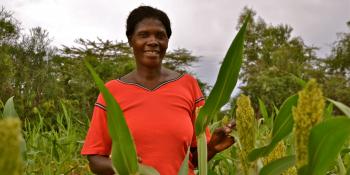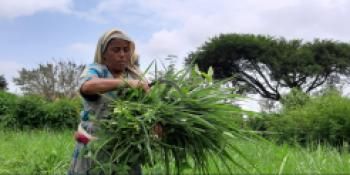Grand greenhouse plans keep youths farming for a better future
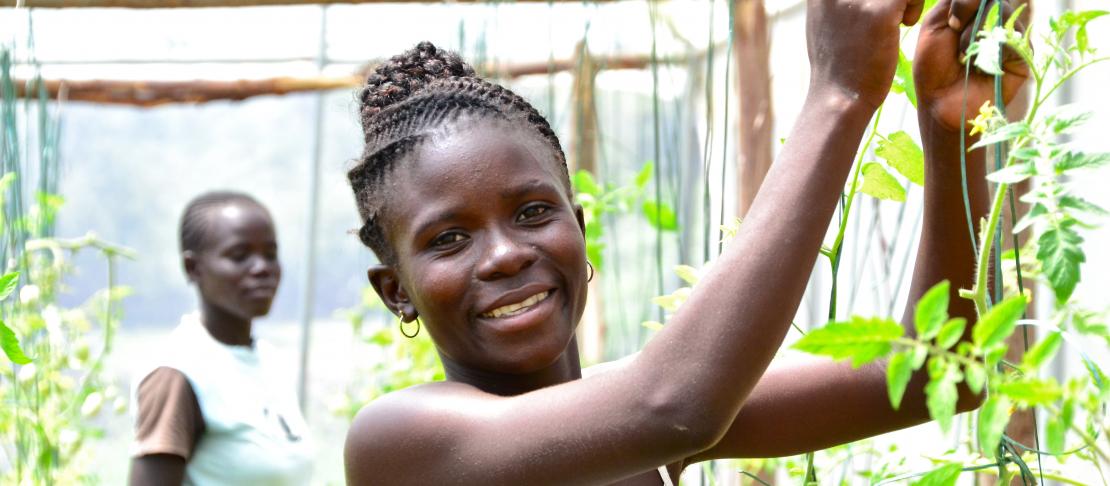
Lower Kamula Youth Group is shaking up the community as members are staying put while empowering other young people in the area to embrace a future as farmers.
A youth group with grand farming plans is not something you stumble upon everyday, especially when young people are more interested in jobs in the city, than staying on the family farm.
Jack Onyango is a man with many roles. At 30 years of age he is old enough to be considered a village elder, while still excelling in his role as group leader for the Lower Kamula Youth Group. He is also working around the clock as a small-scale farmer to help support his family.
His interest in improving traditional farming practices to match a changing climate and his youth group’s active engagement in the community all led to the CGIAR Research Program on Climate Change, Agriculture and Food Security (CCAFS) East Africa wanting to support the group further. Already earning around 21,000 KES (240 USD), one can say the group has done very well with their newly implemented climate-smart interventions.
Finding smart ways to manage a variable climate
The climate in Lower Nyando is very dry. And when the rains do come these days, they tend to be very intense and short.
“This year everything changed. The rains didn’t come as expected in March and April, and even now we are not getting enough rains. Because of the unpredictable weather, many have lost everything they had,” Jack explained.
As a way to manage the challenges of an increasingly variable rain, as well as degraded land and decreasing land sizes, CCAFS together with local partners Magos Enterprises, Kenya Agricultural Research Institute (KARI), World Neighbors and ViAgroforestry and the nine youth group members, decided to construct a small greenhouse last year. In addition to that, they also decided to grow more drought-resistant crop varieties, drip-irrigation and turn to fish rearing.
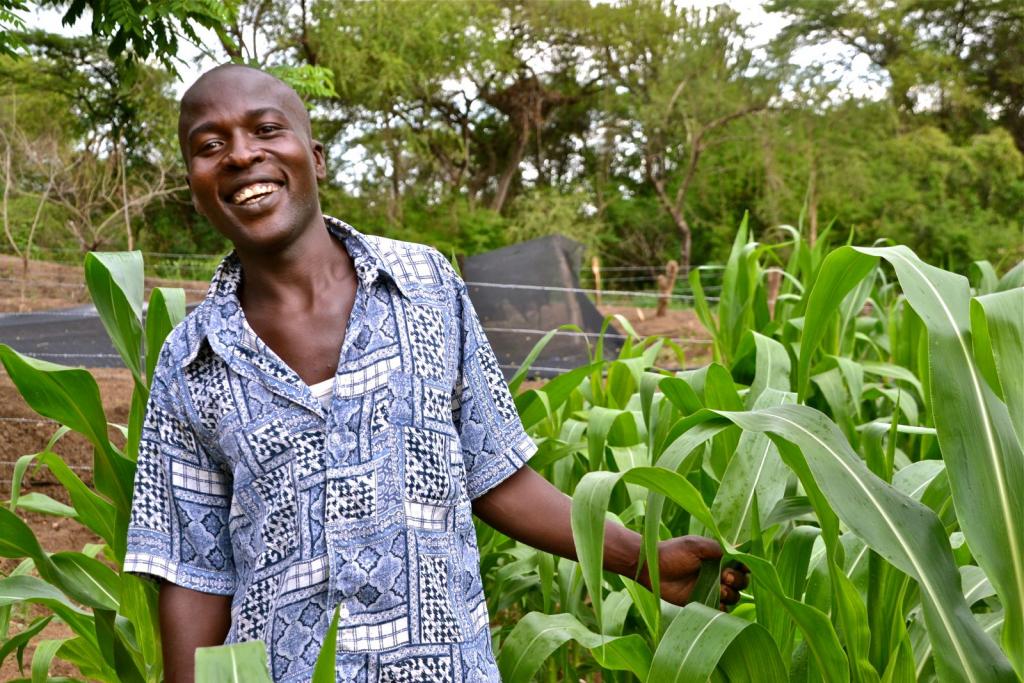
Hybrid crops that are fast-maturing and deal with a dryer climate better might be the way forward in parts of kenya. In the photo: jack Onyango in front of the hybrid sorghum.
photo: c.schubert (CCAFS)
John Recha, researcher with CCAFS East Africa explains that starting a collaboration with the Lower Kamula Youth Group was a very easy decision:
“We saw that the youth members were already testing various new agricultural practices to better manage the increasingly variable climate and we wanted to further support those initiatives.”
“We started by providing them with the know-how and give trainings to boost their agriculture knowledge, and thereafter linked them with partners to promote further collaborations which helped them acquire a greenhouse. As they also wanted to build a mini-dam for water source during the dry periods, we decided to train them on how to successfully integrate it with fish farming.”
The activities carried out in this part of Western Kenya are part of CCAFS East Africa climate-smart village activities, which include several farmers championing climate-smart farm practices, while teaching others on how they too can adapt to a changing climate.
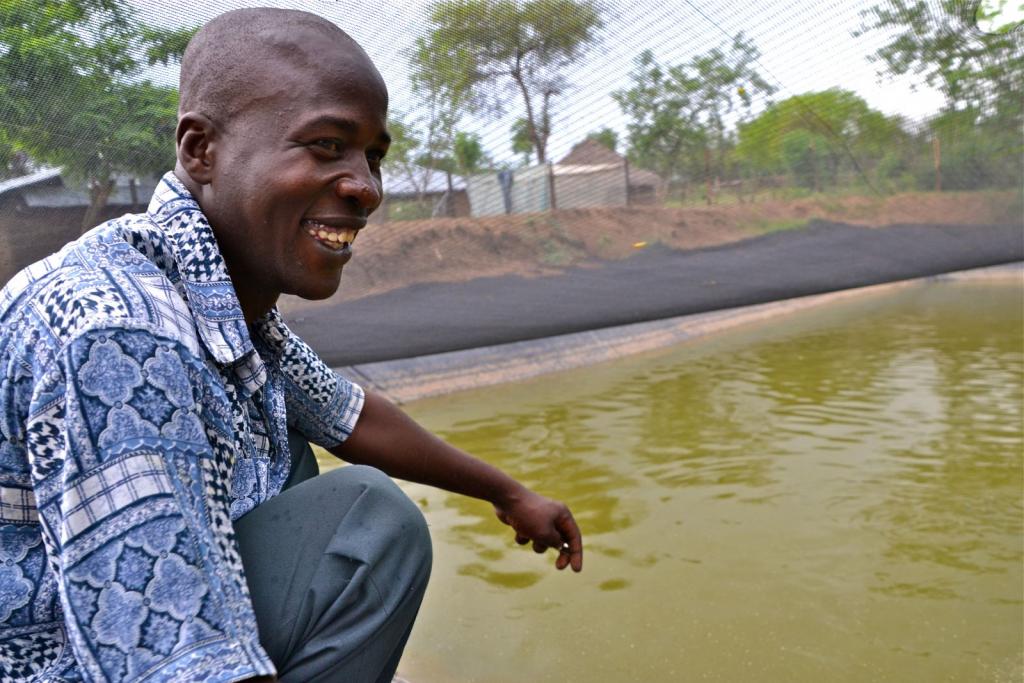
Water pan turned fish pond. the youth group now has 1,000 male tilapias that will be sold when they are big enough. Photo: C. Schubert
The greenhouse
Covered with polythene and combined with drip irrigation lines, this particular greenhouse has the advantage of saving water while protecting the crops against flooding and drought, and offers better control of pests and diseases. In short, a greenhouse can help guarantee a steady yield even if the outside weather plays tricks on farmers.
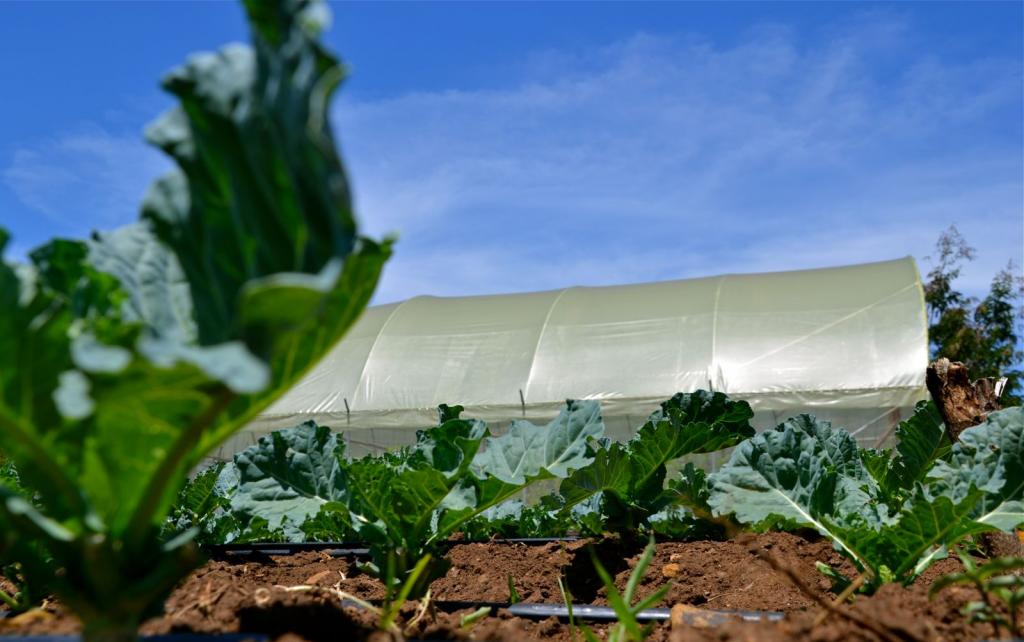
The greenhouse managed by the Lower Kamula youth group. Photo: C.schubert (CCAFS)
The activities come with a research purpose too, to see how greenhouses and water pans with fish can help farmers adapt to climate change.
Tomatoes were the first vegetable that the group decided to grow indoors. After harvesting, a plump tomato can be sold at 5 KSH (0.05 USD) per piece at the market, giving the group a secure income as well as a food source. In the field, the group is testing hybrid crops, such as drought-resistant Sukuma Wiki, a nutritious green vegetable, green beans, sorghum while using their drip irrigation.
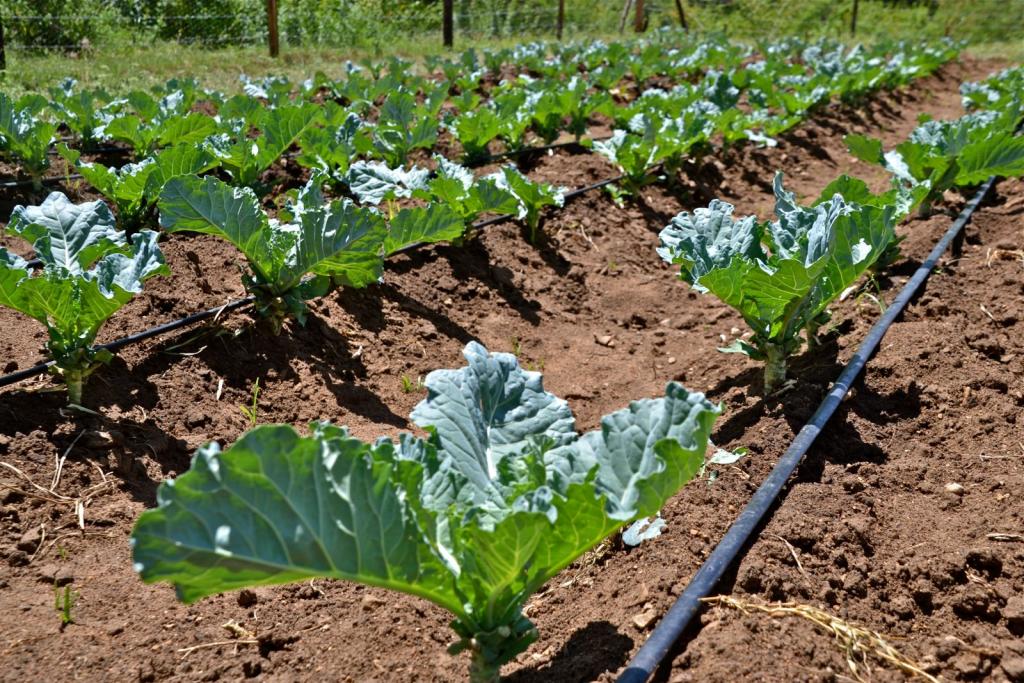
The group's drough-resistant sukuma-wiki with drip-irrigation. Photo: c. schubert (CCAFS)
Grand plans come to life
After earning around 240 USD in one year, it is now time for the group to come together and decide how they will re-invest that money in the various farm activities.
Because of the unpredictable weather the group wants to try and do things differently. "We want to start a poultry business with 200 chickens, preferably local ones as they are more resistant to diseases and you can get a really good price for them in the local market," says Jack.
One high-flying but still realistic plan is the idea for the group to save enough money to 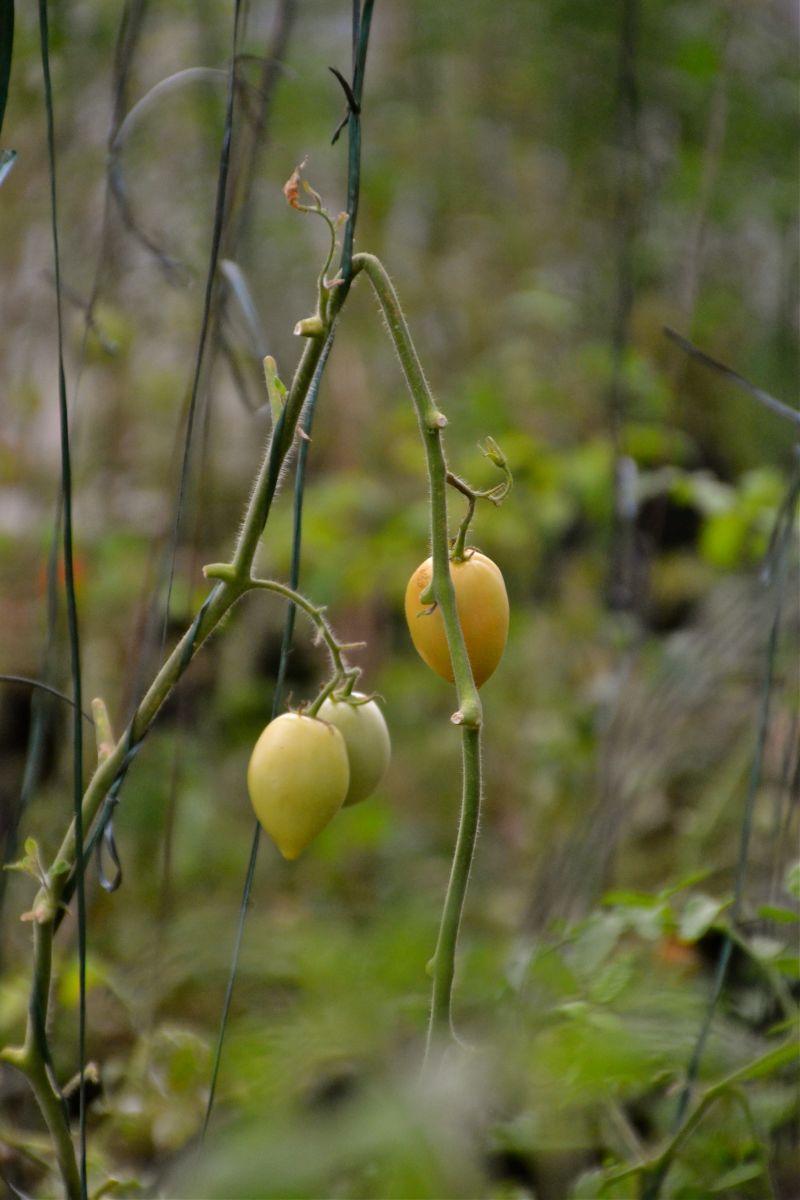 provide every youth group in the area with a greenhouse and related trainings for horticulture, i.e. growing tomatoes and other vegetables.
provide every youth group in the area with a greenhouse and related trainings for horticulture, i.e. growing tomatoes and other vegetables.
The group believes this would encourage other young people in the area to stay in the community and not move to the city to look for work.
Ambition is to empower the whole village, and not just themselves.
Jack and the others in the group have secured a future for themselves, as farmers, and can now stay in their village near their families while having successful careers as farmers. With the many plans they have in store, it is certain the whole community will continue to benefit from the enthusiasm and positive outlook on life that this youth farm-group brings with it.
Youth Group member Remmus Othiambo on how CCAFS East Africa is supporting his community:
Photo-story: What does a climate-smart farm look like?
Video: Jack Onyango on how the climate has changed in his community and ways they are dealing with it.
Written by Cecilia Schubert, Communications Officer at CCAFS. Cecilia visited the climate-smart village activities in Western Kenya in late May 2014.
Read additional stories from this particular visit on our blog.

